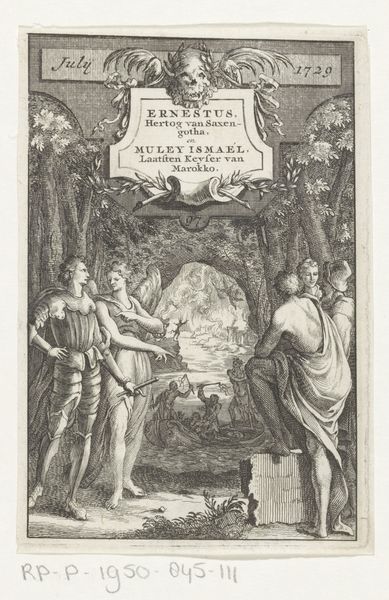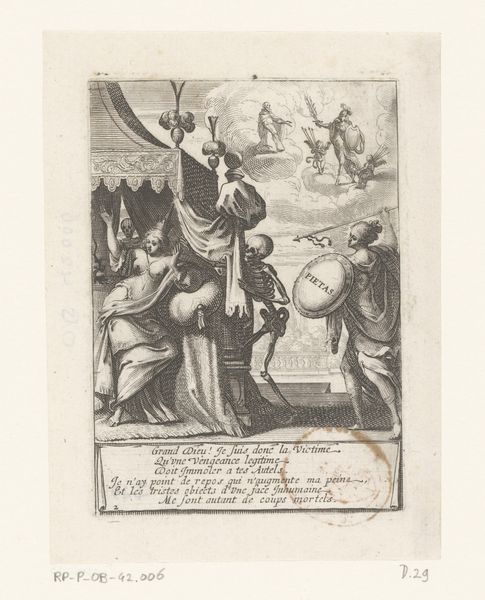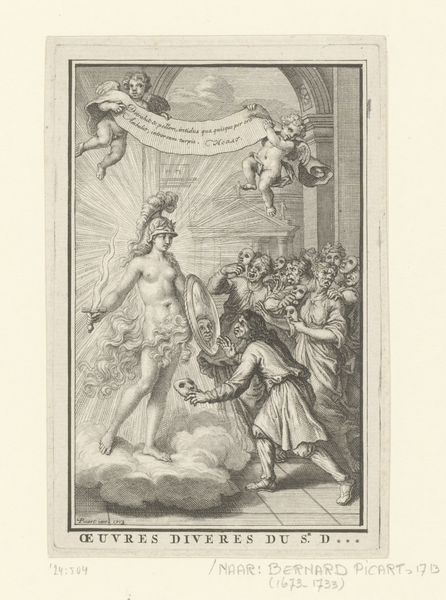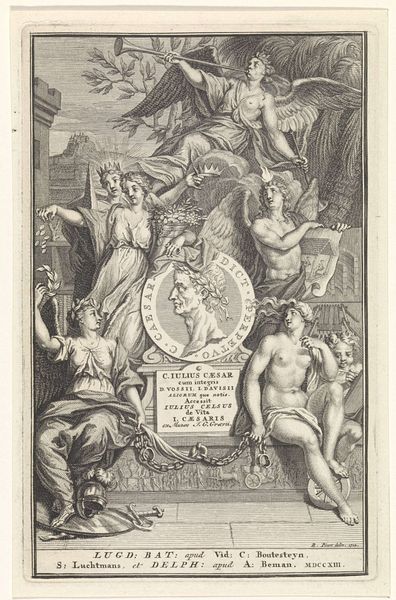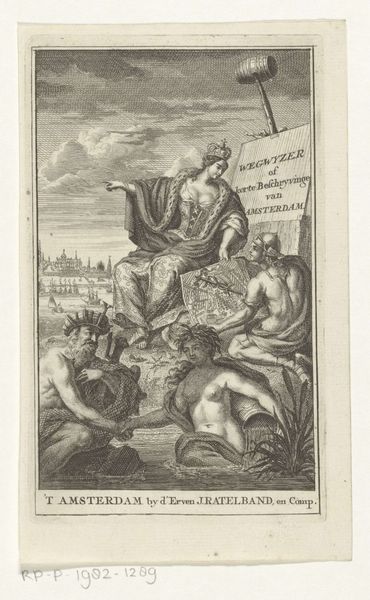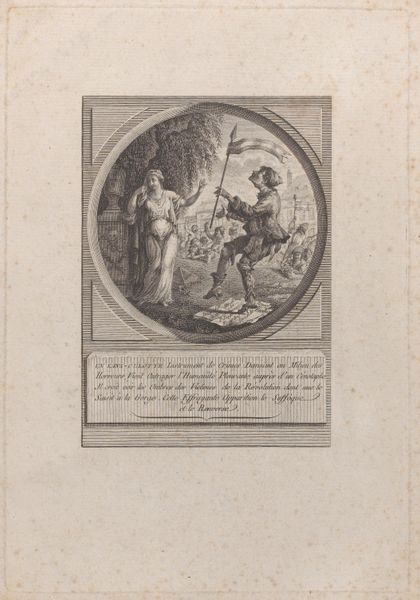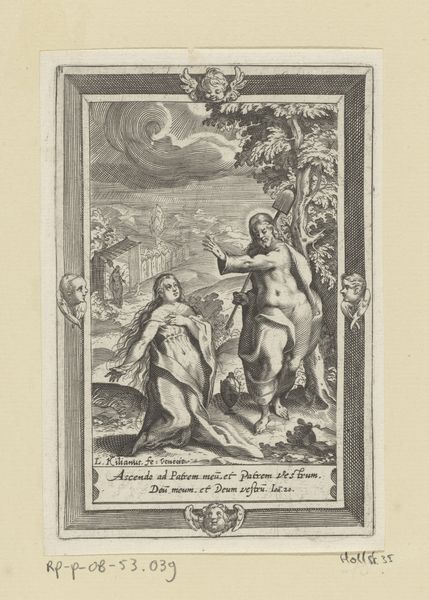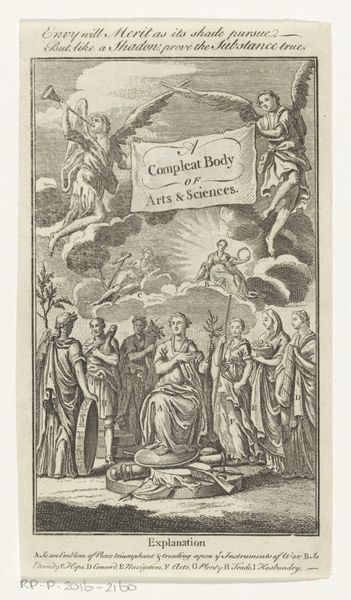
print, engraving
#
portrait
#
baroque
# print
#
pen illustration
#
pen sketch
#
pencil sketch
#
old engraving style
#
figuration
#
pen-ink sketch
#
line
#
history-painting
#
engraving
Dimensions: height 138 mm, width 82 mm
Copyright: Rijks Museum: Open Domain
Curator: Let’s talk about this engraving from 1737 titled "Gesprek tussen keizers Marcus Aurelius en Julianus de Afvallige.” The way the lines create form is really captivating, even though it's monochromatic. It feels very deliberate, almost architectural. What stands out to you? Editor: It has an interesting density. The cross-hatching in the figures creates a palpable sense of depth and volume. The material making up these figures has substance. How might we think about the historical production of prints like this impacting its artistic intention? Curator: Excellent question. Consider the cultural role prints played in 18th century Europe. Before photography, engravings were a primary means of disseminating images and ideas. The relatively low cost of production made them accessible to a broader audience, democratizing knowledge and culture. The very *process* of engraving, the labor of carving into a metal plate, dictated the aesthetic. Look closely—can you see how the line work conveys texture and light? Each stroke, each hatch mark is a decision. It represents time, skill, and a deliberate act of reproduction. Does that change how you see it? Editor: It does. Thinking about it as a mode of mass production, even then, it shifts the emphasis. It isn't necessarily about high art but about distributing a message. Curator: Precisely! Who was this print *for*, what purpose did it serve? It may have been didactic. And thinking about materiality: the kind of paper used, the quality of the ink, where might that have placed its value? Editor: It definitely pushes me to think about art beyond just the image and more about its journey and purpose in society. Curator: And by investigating that, we deepen our understanding of not just this piece but the era it came from. Thanks, that makes me think about prints very differently now!
Comments
No comments
Be the first to comment and join the conversation on the ultimate creative platform.

